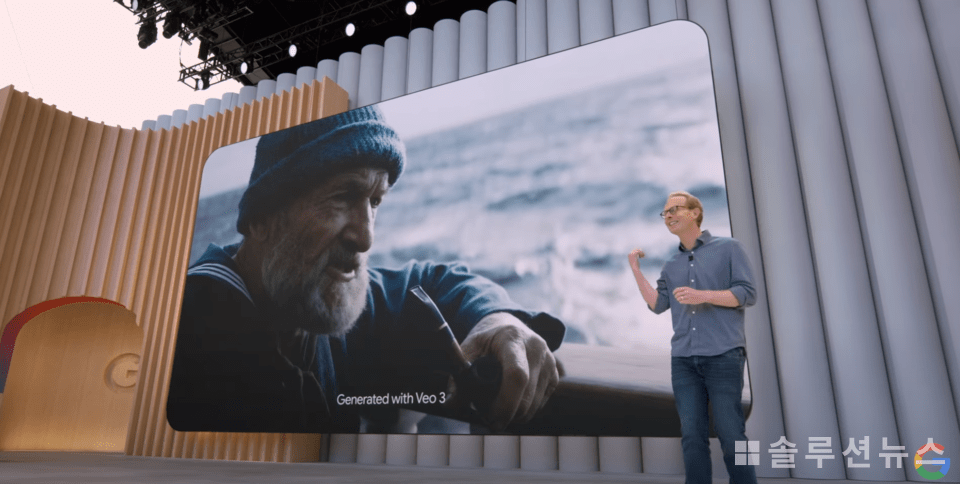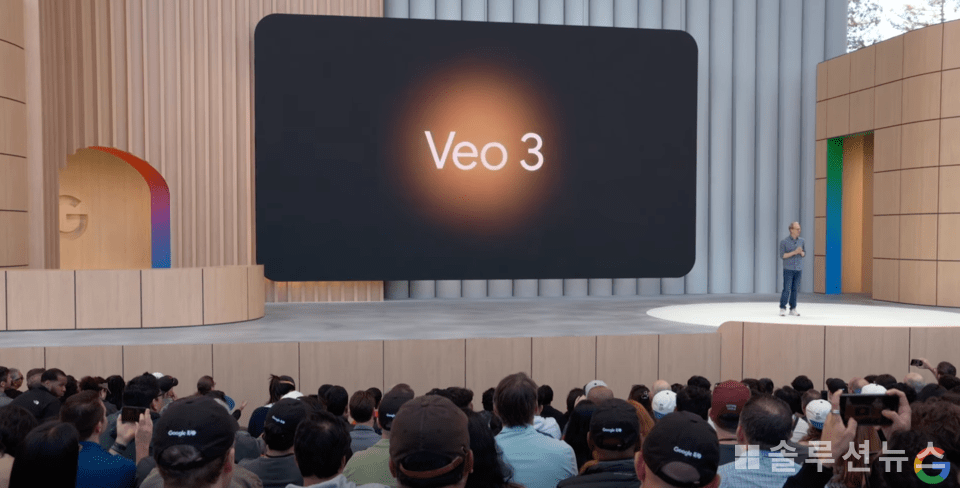
Google has once again raised the bar in AI-based video generation technology. At the ‘Google I/O 2025’ developer event held in Mountain View, California on the 20th and 21st of local time, Google DeepMind unveiled its latest video generation model, ‘Veo 3’.
Veo 3 is an AI model that automatically generates short videos based on user text or image descriptions. Unlike the previous generation model, Veo 2, this version also creates ‘sound’. It not only visualizes the screen but also integrates audio elements such as character dialogues, background noise, and sound effects harmoniously into videos. Google describes this feature as an “innovation that opens new possibilities for filmmakers and storytellers.”

The core of Veo 3 lies in its realistic quality. Videos are rendered in 4K resolution, capturing the natural movement, reflection of physical principles, and texture representation with realism. For instance, a text input describing a ‘rainy city’ can produce a realistic urban landscape video complete with car sounds and the murmur of people.
This model also incorporates the ‘prompt rewriter’ feature, which accurately analyzes user inputs. It automatically supplements user’s brief descriptions with background sounds, camera angles, and character dialogues, allowing users to easily create complex content without professional video production knowledge.

Along with this announcement, Google introduced ‘Flow’, an integrated video production tool centered around Veo 3. Designed to handle the creative process from story planning to video completion on a single platform, Veo 3, the image generation model Imagen 4, and the conversational AI Gemini are linked.
In Flow, users can set the first and last scenes of a video, specify camera movement directions, and directly control nearly every aspect of video production, including maintaining character appearance consistency, reflecting specific styles, and scene editing. Additionally, the platform includes advanced features such as object addition/deletion, outpainting, motion control, and character animation, allowing for professional-grade results.
Currently, Veo 3 is offered as part of Google’s paid subscription service, exclusively available in the United States and not yet accessible in Korea. The highest level of access is available through the ‘Google AI Ultra’ plan, which costs $249.99 per month (approximately 360,000 KRW). Various other access methods were introduced, but they remain limited in Korea.
Veo 3 currently generates videos approximately 8 seconds long, outperforming OpenAI’s ‘Sora’. The technology is anticipated to transform creative methods across the video industry.
Veo 3 sets a new standard in AI video generation technology, offering potential to revolutionize content creation methods overall. However, it requires cautious adoption and concurrent social discussions on technological ethics. It is projected to take some time before Korean users can experience this technology directly.